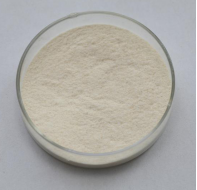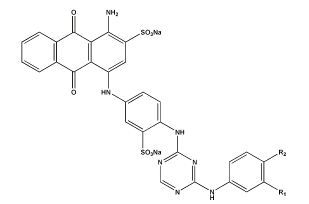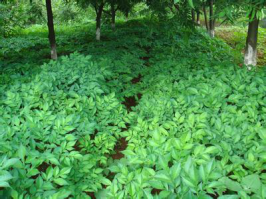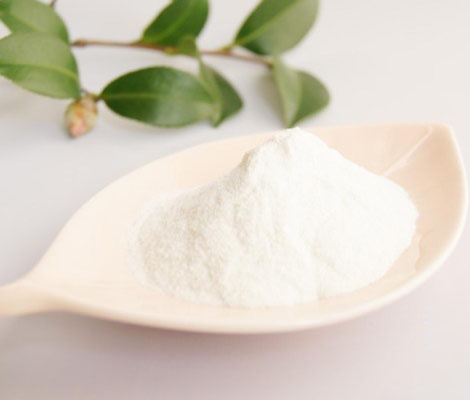Best-Selling Konjac Gum Powder Factory for Cairo
Best-Selling Konjac Gum Powder Factory for Cairo Detail:
[Latin Name] Amorphophallus konjac
[Plant Source] from China
[Specifications] Glucomannan85%-90%
[Appearance] White or cream-color powder
Plant Part Used:Root
[Particle size] 120 Mesh
[Loss on drying] ≤10.0%
[Heavy Metal] ≤10PPM
[Storage] Store in cool & dry area, keep away from the direct light and heat.
[Shelf life] 24 Months
[Package] Packed in paper-drums and two plastic-bags inside.
[Net weight] 25kgs/drum
[Introduction]
Konjac is a plant that is found in China, Japan and Indonesia. The plant is part of the genus Amorphophallus. Typically, it thrives in the warmer regions of Asia.
The extract of the Konjac root is referred to as Glucomannan. Glucomannan is a fiber-like substance traditionally used in food recipes, but now it is utilized as an alternative means of weight loss. Along with this benefit, konjac extract contains other benefits for the rest of the body as well.
The main material of the natural konjac gum is fresh konjac, which grow in virgin forest in Hubei area. We use advanced method to distill the KGM, aminophenol, Ca, Fe, Se which are good for health. Konjac is known as“ the seventh nutriment for human”.
Konjac Gum with its special water holiding capacity, stability, emulsibility, thickening property,suspension property and gel propery can especially adopted in food industry.
[Main Function]
1.It could reduce postprandial glycemia, blood cholesterol and blood pressure.
2.It could control appetite and reduce body weight.
3.It could increase insulin sensitivity.
4.It could control insulin resistant syndrome and diabetesII development.
5.It could reduce heart disease.
[Application]
1) Gelatinizer(jelly, pudding, Cheese, soft candy, jam );
2) Stabilizer(meat, beer);
3) Film Former(capsule, preservative)
4) Water-keeping agent( Baked Foodstuff );
5) Thickener (Konjac Noodles, Konjac Stick, Konjac Slice, Konjac Imitating Food stuff);
6) Adherence agent( Surimi );
7) Foam Stabilizer (ice cream, cream, beer)
Product detail pictures:

Related Product Guide:
Our business puts emphasis on the administration, the introduction of talented personnel, as well as the construction of team building, trying hard to further improve the standard and liability consciousness of staff members customers. Our enterprise successfully attained IS9001 Certification and European CE Certification of Best-Selling Konjac Gum Powder Factory for Cairo , The product will supply to all over the world, such as: Bangladesh, Czech, San Diego, Since our establishment, we keep on improving our products and customer service. We are able to provide you with a wide range of high quality hair products at competitive prices. Also we can produce different hair products according to your samples. We insist on high quality and reasonable price. Except this, we provide best OEM service. We warmly welcome OEM orders and customers all over the world to cooperate with us for mutual development in the future.
Was sind Zweifach und Vielfachzucker? Was hat Mehl mit Vielfachzuckern zu tun? Wie werden die Mehrfachzucker dargestellt? Wie gelangt man von Fischer in die Haworth-Projektion? Wie sieht Glucose in der Haworth-Projektion aus? Was muss man bei der Haworth-Projektion alles beachten? Wie sieht Malzzucker aus?
Kategorie: Abitur
Hier kommst du direkt zum nächsten Video:
» ALLE KANÄLE
Wirtschaft: https://www.thesimpleeconomics.de
Mathe: https://www.youtube.com/TheSimpleMaths
Biologie: https://www.thesimplebiology.de
Physik: https://www.thesimplephysics.de
Chemie: https://www.thesimplechemics.de
» MEHR VON UNS
Twitter: https://www.twitter.com/thesimpleclub
Facebook: https://fb.thesimpleclub.de
Alex auf Instagram: https://alex.thesimpleclub.de
Nico auf Instagram: https://nico.thesimpleclub.de
» WAS IST THE SIMPLE CLUB?
Wir sind der Meinung, dass Bildung Spaß machen muss. Deswegen bieten wir dir auf 4 Kanälen die beste und unterhaltsamste Nachhilfe die du im Netz finden kannst: Und das in Mathematik, Biologie, Chemie und Physik.
In verschiedenen Kategorien und Schwierigkeitsgraden bereiten wir dich auf deine Prüfung vor. Egal ob Schüler oder Student, ob jung oder alt, bei uns findet jeder die passenden Videos.
Und das Beste: TheSimpleClub ist und bleibt komplett kostenlos!
» CREDITS
Ein Konzept von Alexander Giesecke und Nicolai Schork
Geschrieben von: Kevin Reinmuth
Visuelle Konzeption: Antje Heidemann
Ton: Alexander Giesecke
Schnitt & Effekte: Vincent Viebig
» BILDQUELLEN
//BildquellenMehl: Veganbaking.net (flickr), https://bit.ly/12hg4mn, CC BY-SA 2.0
Holzstapel: Kreuzschnabel (Wikimedia Commons), https://bit.ly/1pTP86x, GFDL 1.2 / CC BY-SA 3.0
Zuckerwürfel: david pacey (rockindave1) (Flickr), https://bit.ly/TNcbRw, CC BY 2.0
Amylose: Roland1952 (Roland Mattern( (Wikimedia Commons), https://bit.ly/1we96ez, CC BY 3.0
Do Plants have sex?
plants produce beautiful, elegant, fragrant flowers for one reason only, to have sex and the reason they produce flowers to have sex is so that they can make babies, call them seeds if you like.
Every plant produces a flower and that flower is fertilized and produces a fruit.
So yes, plants actually do have sex directly or indirectly. it is called pollination. Pollination is the process by which pollen is transferred in the reproduction of plants, thereby enabling fertilization and reproduction.
it takes male and female, to create a fertile egg and form a mature fruit that will give off a seed to create new life.
Self Pollination is the process by which pollen from the male part a flower is transferred to the female part of the same flower .Corn is an example of a plant called a self-pollinator.
Sounds like sexual reproduction .When people pluck the sweet-smelling blooms of a plant,
they’re actually dismembering the reproductive organs of plants.
male parts of flower called as stamens that produce a sticky powder called pollen.Female parts of flower are called as Stigma.
Most plants sprout bisexual flowers (which have both male and female parts),
but plants like squash grow separate male and female flowers
Cross-pollination is the transfer of pollen, either by wind or insect, from stamens to stigma between different flowers.
Pollination occurs in several ways.Usually plants rely on animals or the wind to pollinate them.
When animals such as bees, butterflies, moths, flies, and hummingbirds land at the plants to get food and
get sticky pollen stuck all over themselves. Some of the pollen can rub off onto this new plant’s stigma when they move to another flower to feed,.
Plants that are pollinated by animals often are brightly colored and have a strong smell to attract the animal pollinators.
Another way plants are pollinated is by the wind. The wind picks up pollen from one plant and blows it onto another.
Plants that are pollinated by wind often have long stamens and pistils.
plants also have sexually transmitted diseases.
One of the most serious is anther smut (Ustilago violacea). This fungal disease causes the male organs (anthers) to blacken and shrivel.
Anther smut is spread by unsanitary insect pollinators who carry the infectious spores from one plant to another. The spores infect healthy plants during the spring flowering season,
erupting in their sex organs a year later when the plants once again enter their mating cycle.
The factory can meet continuously developing economic and market needs, so that their products are widely recognized and trusted, and that's why we chose this company.










